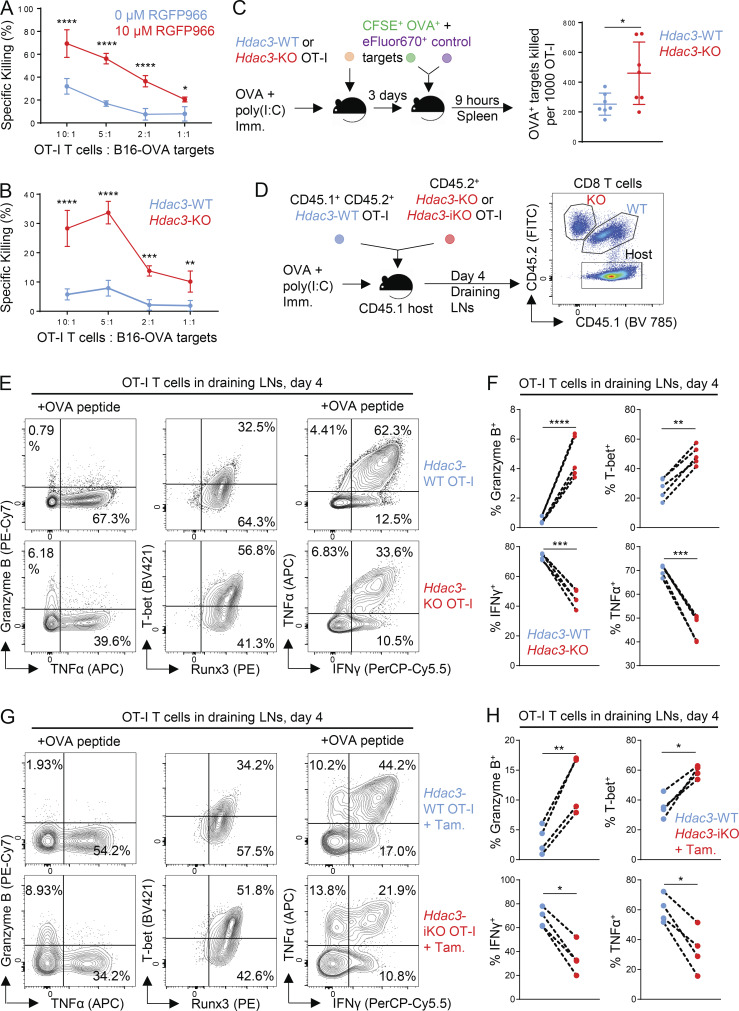Figure 1.
HDAC3 negatively regulates CD8 T cell cytotoxicity. (A and B) Cytotoxicity of in vitro activated RGFP966-treated (A) and Hdac3-KO (B) OT-I T cells against OVA-expressing B16 melanoma targets (B16-OVA). Data are representative of two independent experiments, each with four technical replicates per condition. (C) In vivo cytotoxicity of adoptively transferred Hdac3-KO and Hdac3-WT OT-I T cells against OVA peptide–pulsed target cells. Data are representative of two independent experiments with seven host mice for each genotype of transferred donor OT-I T cells. (D) Experimental scheme of OVA immunization (Imm.) experiments following OT-I transfer. 5 × 105 cells of a 1:1 mix of congenically distinct Hdac3-KO (E8I-Cre+; Hdac3fl/fl) and Hdac3-WT OT-I T cells were transferred into CD45.1+ TCR-polyclonal recipients. Alternatively, 5 × 105 cells of a 1:1 mix of congenically distinct Hdac3-iKO (UBC-Cre-ERT2+; Hdac3fl/fl) and Hdac3-WT OT-I T cells were transferred, and 2 mg of tamoxifen (Tam.) was administered daily for 3 d to induce Cre-mediated inactivation of Hdac3. Mice were immunized subcutaneously with OVA + poly(I:C) in PBS. (E and F) Flow-cytometric analysis (E) and quantification (F) of markers of effector phenotype of Hdac3-WT and Hdac3-KO OT-I T cells in inguinal LNs draining the immunization site harvested 4 d after immunization as in D. Data are representative of two independent experiments with five recipient mice each. Data from cotransferred donor cells of each genotype within the same recipient mouse were analyzed as pairs. (G and H) Flow-cytometric analysis (G) and quantification (H) of markers of effector phenotype of Hdac3-WT and Hdac3-iKO (Hdac3-inducible knockout) OT-I T cells in inguinal LNs draining the immunization site harvested 4 d after immunization as in D. Data are representative of two independent experiments with five recipient mice each. Data from cotransferred donor cells of each genotype within the same recipient mouse were analyzed as pairs. Means ± SD are indicated (A–C). P values were calculated by two-way ANOVA (A and B), two-tailed Student’s t test (C), or two-tailed ratio-paired t test (F and H). *, P < 0.05, **, P < 0.01, ***, P < 0.001, ****, P < 0.0001.

